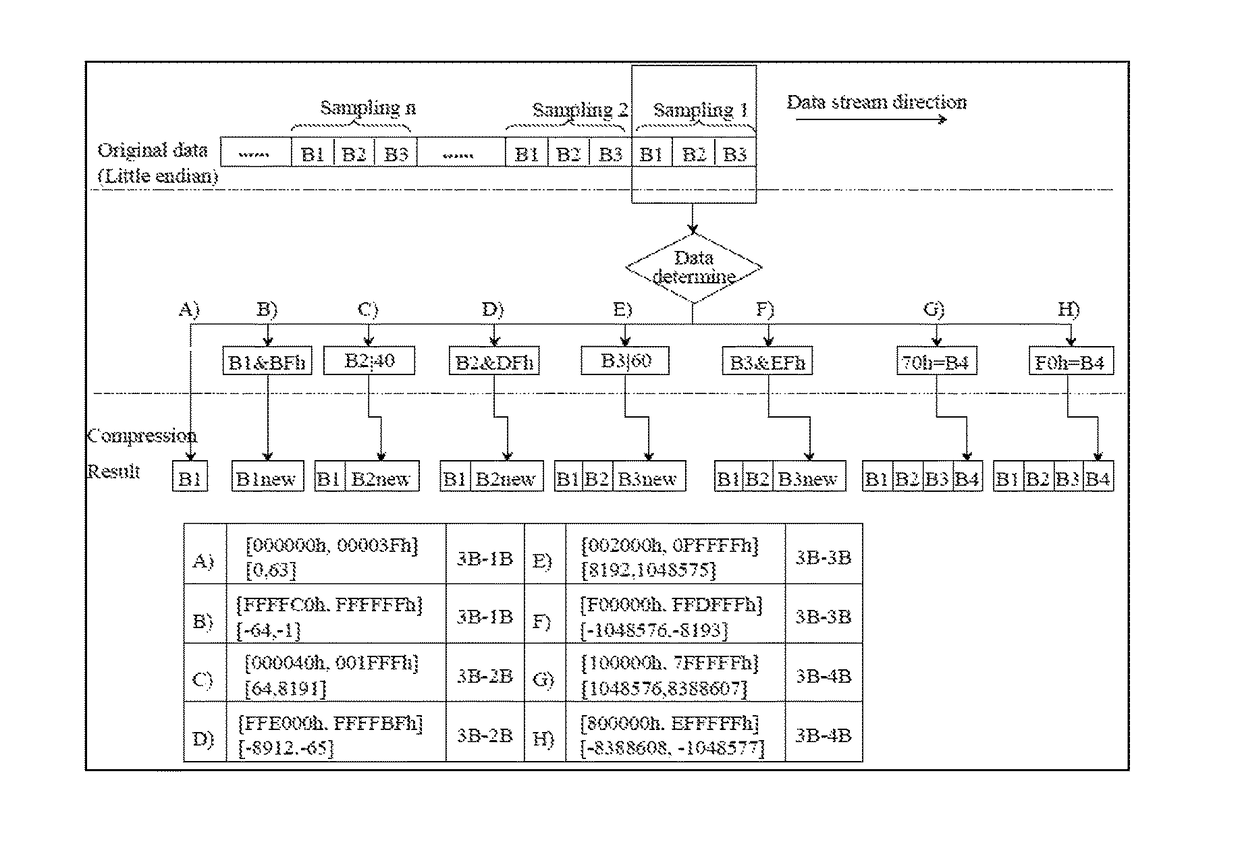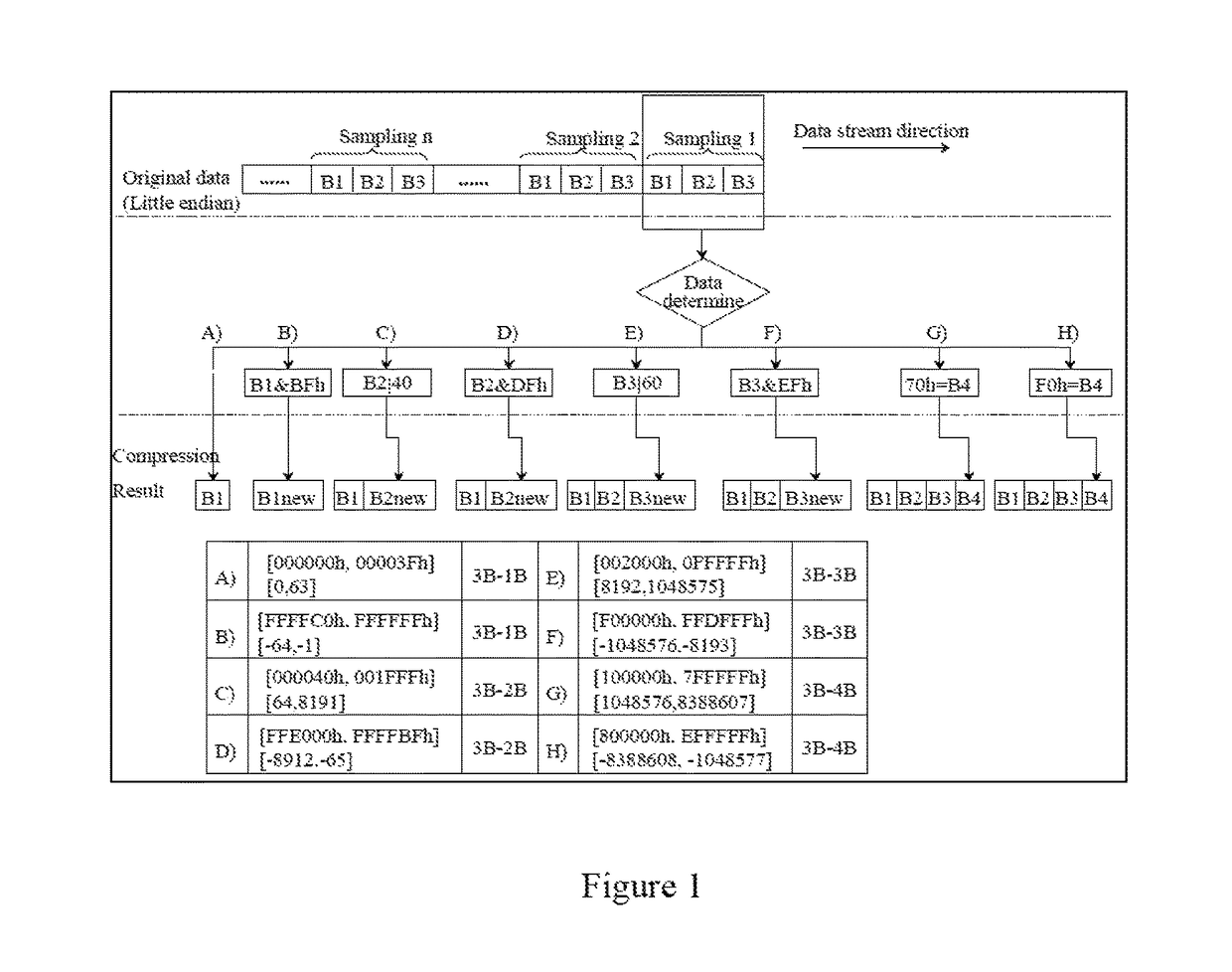Efficient adaptive seismic data flow lossless compression and decompression method
a lossless compression and seismic data technology, applied in seismicity, instruments, measurement devices, etc., can solve the problems of lossless compression requiring a certain amount of data, lossless compression methods requiring complex calculations, etc., to improve the storage capacity and transmission efficiency of equipment.
- Summary
- Abstract
- Description
- Claims
- Application Information
AI Technical Summary
Benefits of technology
Problems solved by technology
Method used
Image
Examples
Embodiment Construction
[0041]FIG. 1 shows the process of lossless compression. As shown in FIG. 1, the compression operation is a cyclical operation performed on 3 bytes of each data sampling point. After a byte is read, a numerical judgment is made, and then divide the byte into 8 compression modes for processing based on the numerical size and the positive or negative value of the byte. Table 1 and FIG. 1 show 8 modes corresponding to the original data range. In each mode, the original 3-byte data was converted to 1, 2, 3, or 4 bytes after compression. Table 1 also lists the compressed data in its binary form, where “b” represents that the bit is either 0 or 1. From the compressed binary form of the value, it can be seen that the core of the compression operation does not change the bit in terms of the magnitude of the values, and redundant sign bits are deleted. Moreover, add different flag bits identify the number of data bytes. For example, “00” on behalf of the data compressed into 1 positive byte, ...
PUM
 Login to View More
Login to View More Abstract
Description
Claims
Application Information
 Login to View More
Login to View More - R&D
- Intellectual Property
- Life Sciences
- Materials
- Tech Scout
- Unparalleled Data Quality
- Higher Quality Content
- 60% Fewer Hallucinations
Browse by: Latest US Patents, China's latest patents, Technical Efficacy Thesaurus, Application Domain, Technology Topic, Popular Technical Reports.
© 2025 PatSnap. All rights reserved.Legal|Privacy policy|Modern Slavery Act Transparency Statement|Sitemap|About US| Contact US: help@patsnap.com



